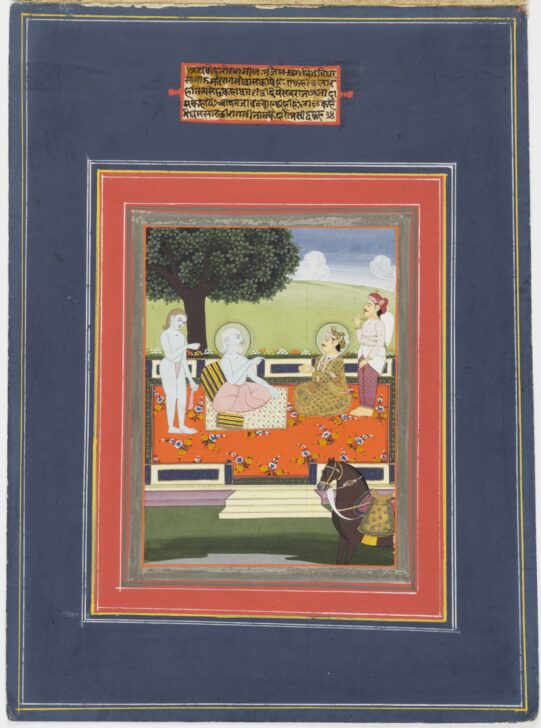Ragamala: Kedar Ragini
Artist Unknown, India, Rajasthan, Jaipur School

Description
Subject Matter:
Ragamala paintings draw from aspects of human experience in order to visualize specific moods, emotions, and qualities such as love, anguish, valor, weakness, and strength. A raga in Indian music is a melody consisting of a string of notes in a particular arrangement. Raginis are derivations from or variations of ragas in feminine mode (the basis of these classifications remains unexplained in many cases), and could have different or similar musical structures as ragas. Specific ragas are associated with specific times of the day, seasons, and emotions. When visualized, as here, ragas and raginis are meant to evoke the same affective responses that are allied to their musical modes. The text above the illustration refers to stories or incidents associated with the depicted raga/ ragini, but may not necessarily be narrative-like or descriptive. Drawn from literary tropes and tales that sophisticated writers and viewers would be aware of, the inscriptions are an integral part of the overall experience of this miniature painting. An illiterate viewer, however, could still enjoy the scene without reading the text.
In this image, a noble visitor comes to visit the blue-bodied ascetic in a forest setting. The visitor brings his attendant and horse along. Following textual precedent, the artist here shows an ascetic “in penance, adorned, gray [with ashes]” listening to a disciple, who is described as “a young man beauteous in every limb.” (Taken from The Met, see: http://www.metmuseum.org/art/collection/search/37863)
In some representations, this young man could also be shown as playing a veena.
Physical Description:
A saint/ascetic (blue body) and another figure appear to be in conversation. Two attendants stand by them, and a horse is also present near-by. They are seated in an open pavilon/ terrace, in a garden-like setting, and it is daytime. A short verse is painted above the depicted scene.
Usage Rights:
If you are interested in using an image for a publication, please visit https://umma.umich.edu/request-image/ for more information and to fill out the online Image Rights and Reproductions Request Form.